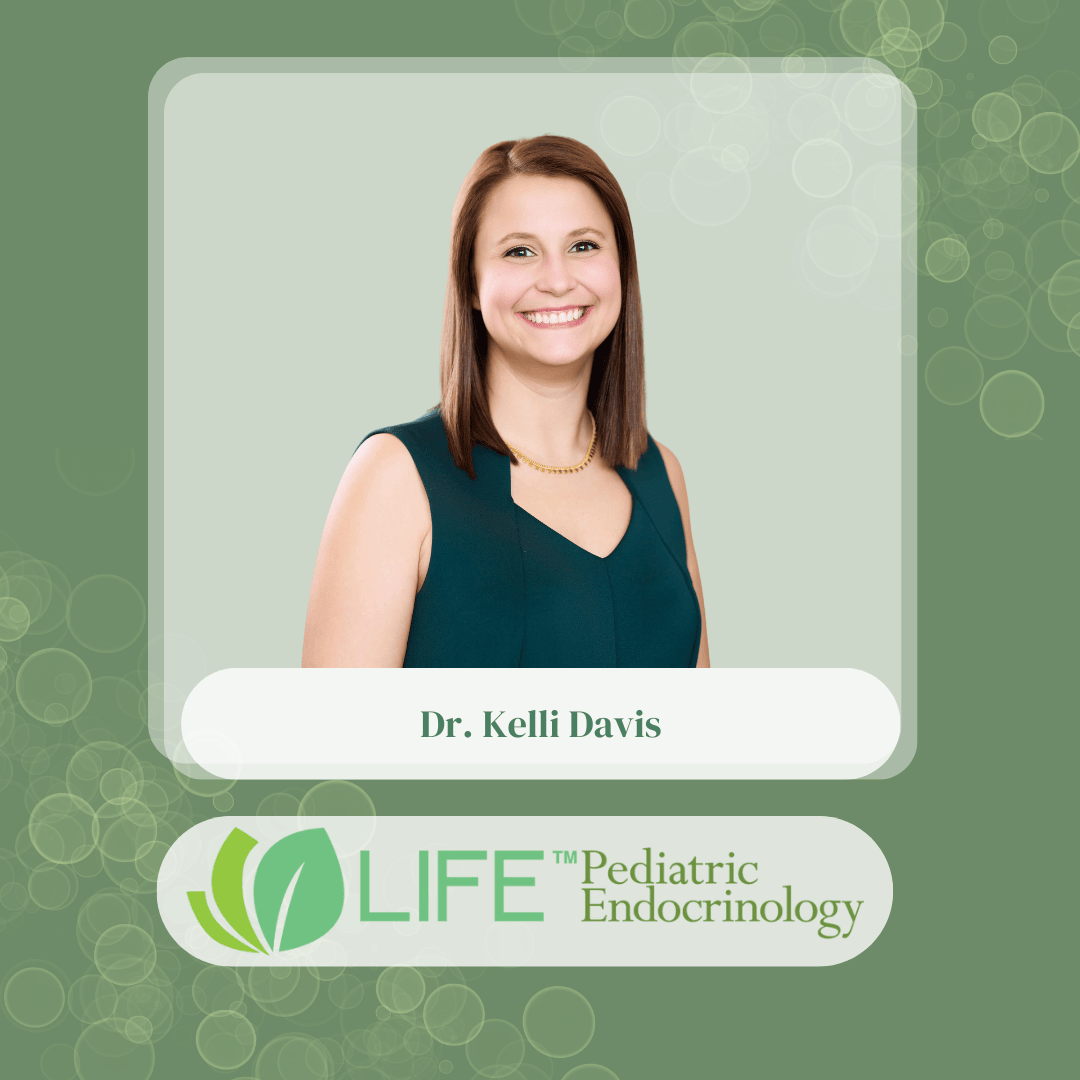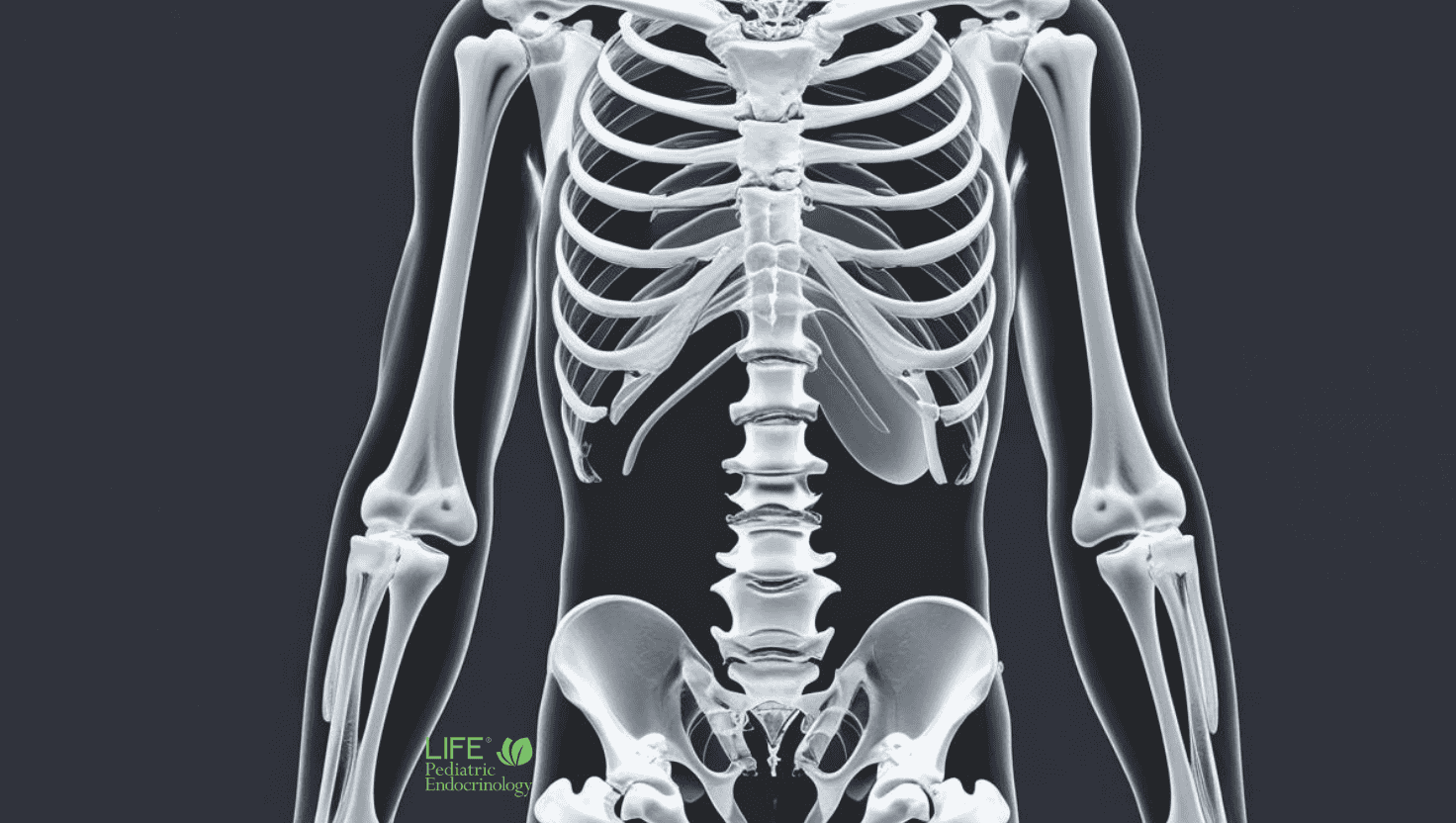By Dr. Kelli Davis, Pediatric Endocrinologist at Life Pediatric Endocrinology
Understanding Early Signs, Common Symptoms, and Whole-Body Effects of Bone Disorders
Bone disease in children and adults is often misunderstood. Families may think of “weak bones” only in terms of fractures, but bone disorders—especially genetic conditions like osteogenesis imperfecta (OI) and other metabolic bone diseases—can affect the whole body.
As a pediatric endocrinologist who specializes in metabolic bone disease, I want to help families understand not just the hallmark skeletal symptoms, but also the multi-system effects of bone disease. Recognizing these early signs is critical for timely diagnosis, treatment, and long-term health outcomes.
📖 For additional background, Johns Hopkins Medicine provides a strong overview of metabolic bone disease. Below, I expand on the latest research and clinical insights to give families the most comprehensive picture.
Core Symptoms of Bone Disease
1. Bone Fragility and Frequent Fractures
The most recognized symptom of bone disease is bone fragility. Children with OI or other metabolic bone disorders may experience fractures from minimal trauma, sometimes even during routine activities like walking or playing .
2. Growth and Skeletal Deformities
Bone disease often affects growth patterns. Short stature, scoliosis, and limb deformities are common in more severe forms. Recent studies even provide OI-specific growth curves to help clinicians track realistic expectations .
3. Muscle Weakness and Mobility Limitations
Muscle weakness is increasingly recognized as part of OI and related disorders. This stems from both collagen abnormalities and the consequences of reduced mobility due to fractures and deformities【1,2†source】.
4. Dental and Craniofacial Symptoms
Conditions such as dentinogenesis imperfecta (fragile or discolored teeth), malocclusion, and facial bone differences can signal underlying bone disease .
5. Hearing Loss
Progressive hearing loss, usually emerging after puberty, is a well-established symptom in many patients with OI【2,3†source】.
6. Distinctive Physical Features
The American Academy of Pediatrics notes that children with OI may present with:
-
Blue or gray sclera (the whites of the eyes appear tinted)
-
Triangular-shaped face or macrocephaly (large head)
-
Hyperextensible joints
-
Easy bruising
-
Umbilical or inguinal hernias
-
Wormian bones (extra bone pieces in the skull)
7. Chronic Pain
Pain is one of the most disabling features of bone disease. In a multicenter study, back pain was the most common complaint, but pain throughout the body was reported in children and adults across all OI types .
8. Cardiopulmonary Complications
In severe cases, bone deformities of the chest wall and spine can contribute to respiratory or heart complications, making multidisciplinary care essential .
Why Symptoms Vary So Widely
Bone disease is not “one size fits all.” Even within the same family, severity may differ because of genetic diversity—dominant or recessive inheritance, and even variable expression of the same mutation【2–4†source】. This is why expert evaluation is critical.
When to Seek Evaluation
If your child is experiencing recurrent fractures, unexplained short stature, dental abnormalities, or chronic pain, it’s important to see a pediatric endocrinologist or bone specialist. At Life Pediatric Endocrinology, we combine advanced genetic testing, metabolic evaluation, and a holistic care model to support bone strength, growth, and long-term quality of life.
References
-
Marulanda J, Retrouvey JM, Rauch F. Skeletal and Non-Skeletal Phenotypes in Children With Osteogenesis Imperfecta. Calcified Tissue International. 2024;115(6):923-930. doi:10.1007/s00223-024-01276-3.
-
Crawford TK, Lafaver BN, Phillips CL. Extra-Skeletal Manifestations in Osteogenesis Imperfecta Mouse Models. Calcified Tissue International. 2024;115(6):847-862. doi:10.1007/s00223-024-01213-4.
-
Rodriguez Celin M, Steiner RD, Basel D. COL1A1- and COL1A2-Related Osteogenesis Imperfecta. GeneReviews® [Internet]. Updated 2025 May 29.
-
Haney S, Scherl S, DiMeglio L, et al. Evaluating Young Children With Fractures for Child Abuse: Clinical Report. Pediatrics. 2025;155(2):e2024070074. doi:10.1542/peds.2024-070074.
-
Rodriguez Celin M, Kruger KM, Caudill A, et al. A Multicenter Study to Evaluate Pain Characteristics in Osteogenesis Imperfecta. Am J Med Genet A. 2023;191(1):160-172. doi:10.1002/ajmg.a.63009.
FAQ: Symptoms of Bone Disease
What are the earliest symptoms of bone disease?
Frequent fractures, short stature, and blue sclera are often early red flags.
Can bone disease affect teeth?
Yes—dentinogenesis imperfecta and fragile teeth are common in OI.
Does bone disease cause pain?
Chronic pain, especially in the back, is common across all types of OI.
Is hearing loss a symptom of bone disease?
Yes, progressive hearing loss often occurs in adolescence or adulthood.
Share this
You May Also Like
These Related Stories

What is Hypophosphatasia?

What Is Bone Disease? Understanding Causes, Symptoms, and Treatments


